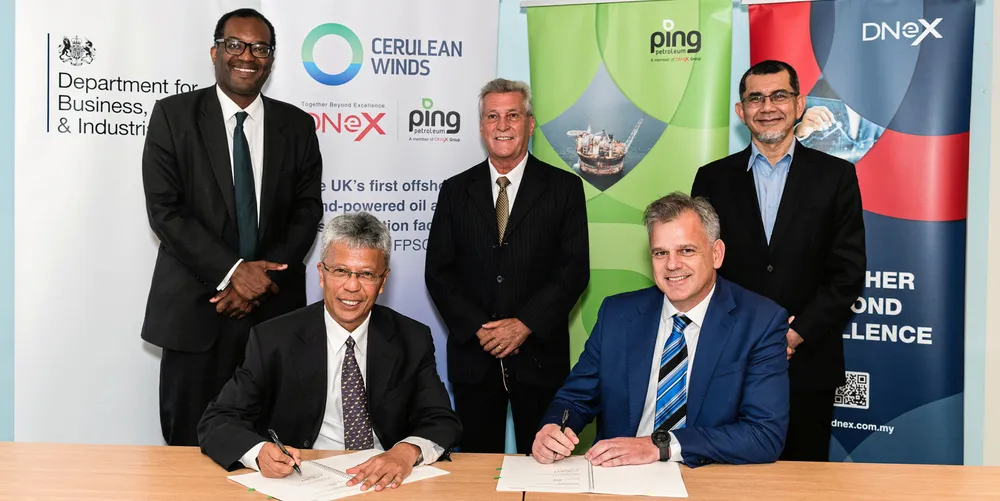UK's first floating wind-powered oil & gas field moves forward as Cerulean seals Ping deal
Agreement between British developer and Malaysian petroleum player would see 23 million barrel North Sea Avalon project built around Sevan Hummingbird FPSO and single floating wind turbine with eye on 2025 start-up

Britain could see a first floating wind-powered oil & gas field operating in its waters as early as 2025, following the inking of a potentially historic deal between UK green energy infrastructure developer Cerulean and Malaysia’s Ping Petroleum.
The agreement, signed during a meeting hosted by UK secretary of state Kwasi Kwarteng, targets development of the Avalon project in the central North Sea using a floating storage production and offloading (FPSO) vessel wired together with a single large-scale floating wind turbine.
“The North Sea oil & gas sector has been a major British industrial success story for decades. We must keep supporting production on the UK continental shelf for security of supply as we transition to clean, affordable, home-grown energy, ” said Kwarteng.
“In the meantime, we need to cut emissions from [oil & gas] production. Platform electrification projects such as this are a welcome step forward to reduce emissions from production, secure jobs and new skills and deliver on the commitments of the North Sea Transition Deal [published last year].”
“As the world transitions to a low-carbon future, Ping [aims] to be an early implementor of this revolutionary technology in the UK North Sea for our new greenfield project,” said Tan Sri Syed Zainal Abidin Syed Mohamed Tahir, Group Managing Director of Ping-owner DNeX.
“This project which uses offshore wind to power operations demonstrates our long-term commitment to establish a low carbon development concept. It will substantially lower the emissions intensity of our operations which supports long term climate change goals globally.
“In addition, it enables us to seize market opportunities arising from the energy sector’s low-carbon transformation and development. The creation of an additional revenue stream via the supply of excess energy to nearby facilities will positively contribute to our financial performance.”
Cerulean’s founding director Dan Jackson said: “The UK has a golden opportunity to make our domestic oil & gas production the cleanest in the world – scaling the green economy and creating thousands of jobs in the process.
“This pioneering project will be ‘Made in the UK’ and through our delivery partners, we will be realising significant investment in UK fabrication yards and ports.
Jackson added that the development would be “a critical step” in scaling the UK supply chain and building experience and a track-record to exploit future opportunities in the fabrication, assembly and servicing of offshore wind developments.”
The project was enabled by a grant to Cerulean Winds through the British government's floating offshore wind demonstration programme.
Through the deal with Ping, Cerulean Winds have “committed to fully manufacturing and assembling” the floating turbine in the UK, a construction project expected to generate £80-100m ($98-102m) in investment in Britain’s emerging offshore wind supply chain.
Though first strides in this space are being made in in the North Sea, the concept is also garnering interest in other key markets, including the Caspian Sea and off Canada’s Atlantic coast.